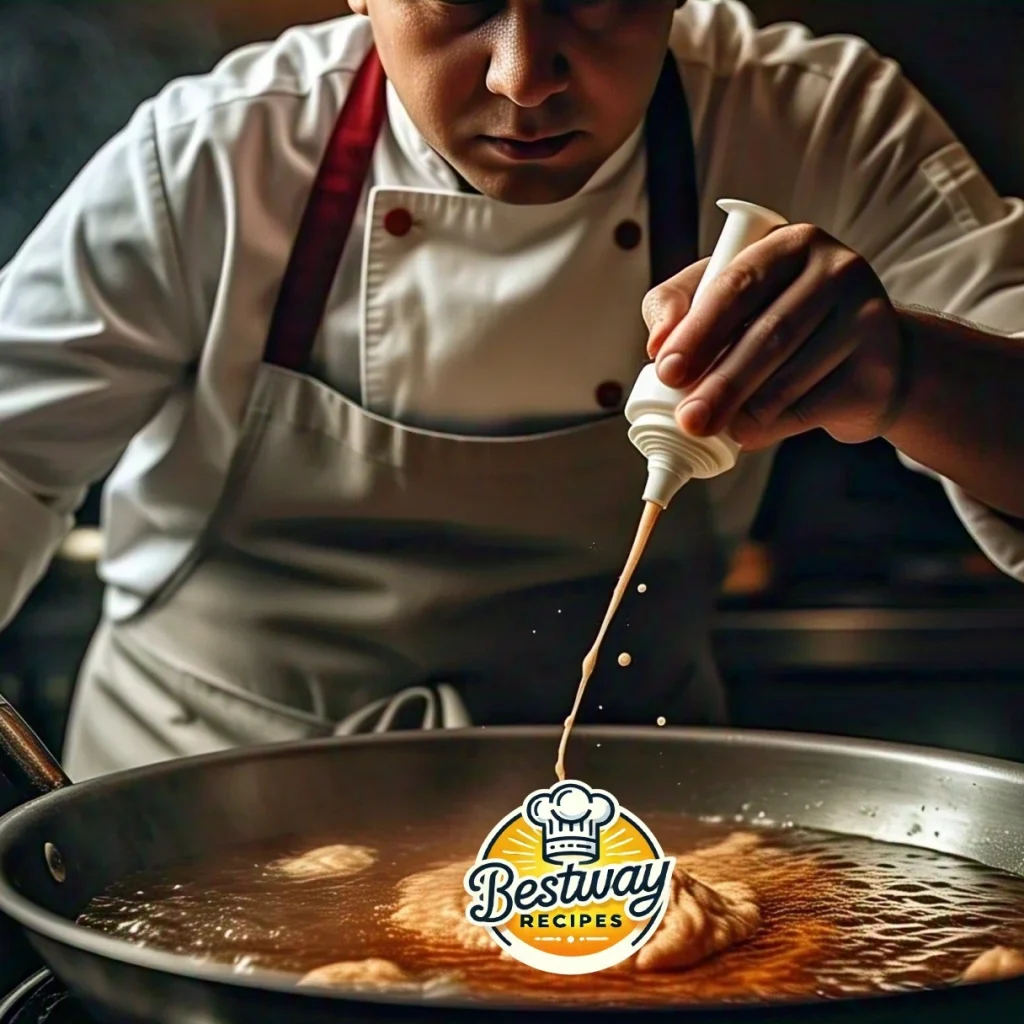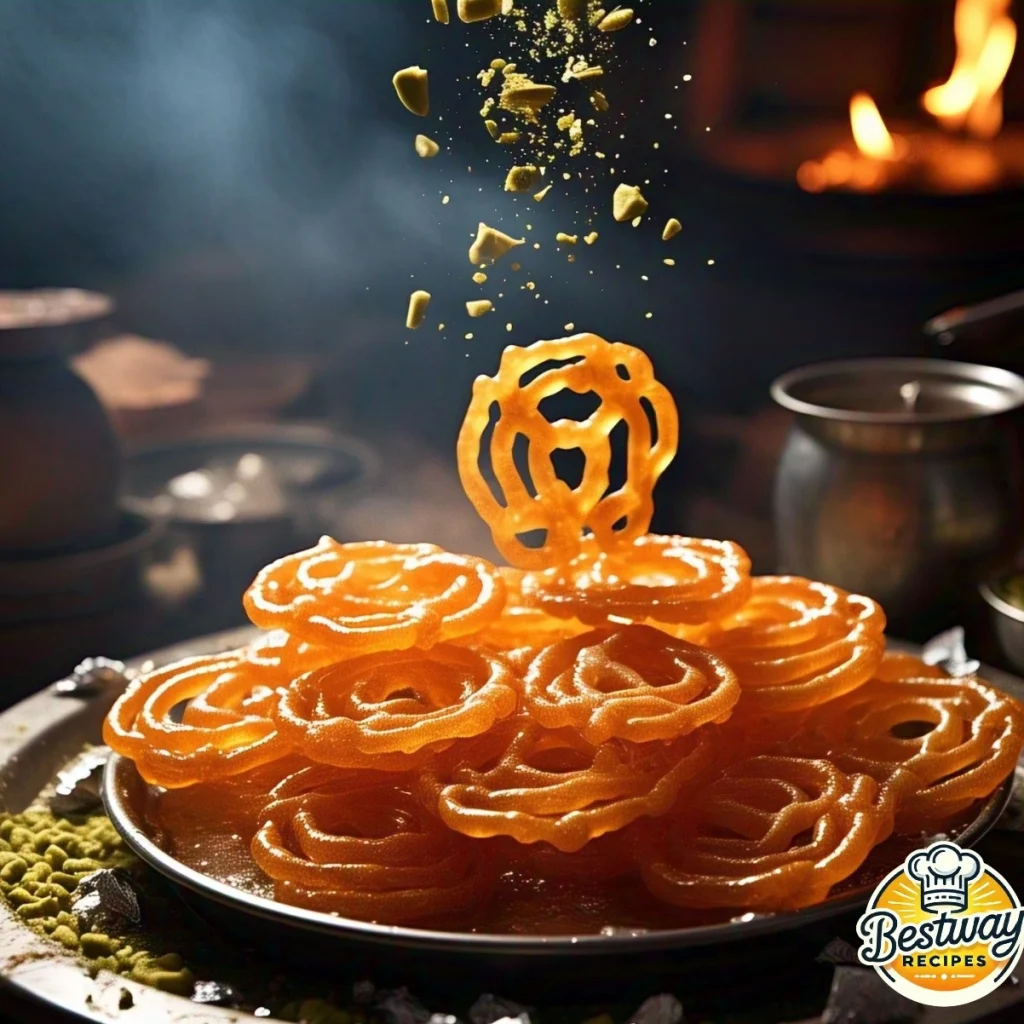
Table of contents
Introduction to Jalebi
Jalebi is a popular dessert from the Indian subcontinent. It has won hearts worldwide with its sweet taste and intricate swirls. People enjoy it during festivals, weddings, or as a special treat. Jalebi is a versatile dessert that fits well with many cultures. In this guide, we will explore its history, preparation, variations, and even its health aspects.
The History of Jalebi
Jalebi originally came from Persia, where it was called “zalabiya.” Over time, it traveled to India and became part of local traditions. Indian cooks modified it to create the jalebi we know today.
zalabia plays an important role in Indian festivals like Diwali and Ramadan. Over the years, it has also become popular in other regions like the Middle East, Africa, and even Western countries.
Ingredients for Jalebi
Making zalabia requires a few simple ingredients:
- Flour (Maida): Forms the batter base.
- Yogurt: Ferments the batter for a tangy flavor.
- Saffron: Adds color and flavor to the syrup.
- Ghee: Used for deep frying.
- Sugar: Makes the sweet syrup.
- Cardamom: Adds fragrance to the syrup.
- Water: Helps create the sugar syrup.
How to Make Jalebi: Step-by-Step







1. Preparing the Batter
- Mix flour, yogurt, and water into a smooth batter.
- Let it ferment in a warm place for 6–8 hours until bubbles form.
2. Frying Jalebi
- Pour the batter into a piping bag or bottle with a nozzle.
- Heat ghee or oil to 350°F (175°C).
- Pipe tight swirls into the hot oil and fry until golden.
3. Making Sugar Syrup
- Boil sugar, water, cardamom, and saffron until sticky but not too thick.
- The syrup should have a “one-string” consistency.
4. Dipping and Serving
- Soak fried jalebis in warm syrup for about 30 seconds.
- Serve warm with milk or rabri (sweetened condensed milk).
Regional Variations of zalabia
Jalebi has different versions around the world:
- Indian Jalebi: Crisp and often served with milk or rabri.
- Imarti (India): Made with urad dal for a thicker texture.
- Middle Eastern Zalabiya: Softer and soaked in rosewater syrup.
- South African Jalebi: Larger and less crispy.
Health Facts About Jalebi
Jalebi is high in sugar and fat but can be enjoyed in moderation. Here’s its nutritional breakdown per 100g:
- Calories: 400–450 kcal
- Carbohydrates: 75g
- Fat: 10g
- Protein: 3g
- Sodium: 50mg
Healthier Options:
- Bake instead of frying for lower fat content.
- Use honey instead of sugar syrup for natural sweetness.
Conclusion
Jalebi is more than just a dessert; it’s a symbol of joy and tradition. Its unique taste and rich history make it loved across the globe. Whether you enjoy it during festivals or as a treat, zalabia always leaves you wanting more!
This revised version uses simpler language, shorter sentences, and clear formatting to make it easier to read while maintaining the original content’s essence. them properly.
Here’s the comprehensive information for a Jalebi recipe:
Jalebi Recipe Information
Preparation Time: PT30M Cooking Time: PT20M Total Time: PT50M Type of recipe: Dessert Cuisine: Indian Keywords: Sweet, Crispy, Festive, Traditional, Syrupy, Indian dessert
Equipment:
1 deep frying pan, 1 heavy-bottomed pot, 1 squeeze bottle or cloth piping bag, 1 slotted spoon, 1 candy thermometer (optional), 1 mixing bowl, 1 whisk
Recipe Yield: 15-20 jalebis Calories: 150 calories per jalebi
Recipe Ingredients:
- 1 cup all-purpose flour (maida)
- 2 tablespoons rice flour
- 1/4 teaspoon baking powder
- A pinch of saffron strands (optional)
- 1/4 teaspoon cardamom powder
- 2 cups sugar
- 1 cup water
- 1/2 teaspoon lime juice
- 2-3 drops food coloring (orange/yellow) (optional)
- 1/4 cup plain yogurt
- Oil for deep frying
Pros:
- Crispy exterior with soft, syrupy interior
- Authentic taste of traditional Indian sweets
- Perfect for celebrations and festivals
- Can be prepared ahead of time
- Impressive dessert for guests
- Few ingredients needed
Cons:
- Requires practice to get the perfect spiral shape
- High in sugar and calories
- Deep frying required
- Time-sensitive process requiring attention
- Sugar syrup consistency needs precise temperature control
Recipe Instructions:
- Make the batter: Mix all-purpose flour, rice flour, baking powder, and yogurt in a bowl. Add water gradually to form a smooth batter with flowing consistency. Ferment for 24 hours (or at least 4-5 hours).
- To prepare the sugar syrup, first, mix sugar and water in a pot, then bring it to a boil. Next, add cardamom powder, saffron strands, and lime juice. After that, let it simmer until it reaches a one-string consistency—when you touch the syrup between your thumb and forefinger, it should form a single thread.
- Add food coloring to the fermented batter if desired. Transfer the batter to a squeeze bottle or cloth piping bag.
- Heat oil in a deep frying pan to medium heat (350°F/175°C).
- Squeeze the batter into the hot oil, forming spiral circles. Fry until golden and crispy on both sides (about 2-3 minutes).
- Remove with a slotted spoon and immediately place in the warm sugar syrup for 1-2 minutes.
- Remove from syrup, allowing excess to drip off, and arrange on a serving plate.
Serve warm or at room temperature for the perfect crispy-soft texture contrast.
Author´sTop Recipes Piks
- Korean Ground Beef:
- Strawberry Cheesecake Cinnamon Rolls
- The Ultimate Hobo Casserole
- Moist Banana Bread Recipe
- 10 Best Chicken Gnocchi Soup Recipes
- Delicious Ditalini Pasta Recipes
- How to Make the Best Potato Soup in 30 Minutes
- How to Make Breakfast Pizza for School in 20 Minutes
- Chicken Breast: How to Cook It Perfectly in 15 Minutes
- How to Make Garlic Parmesan Cheeseburger Bombs in 5 Steps

